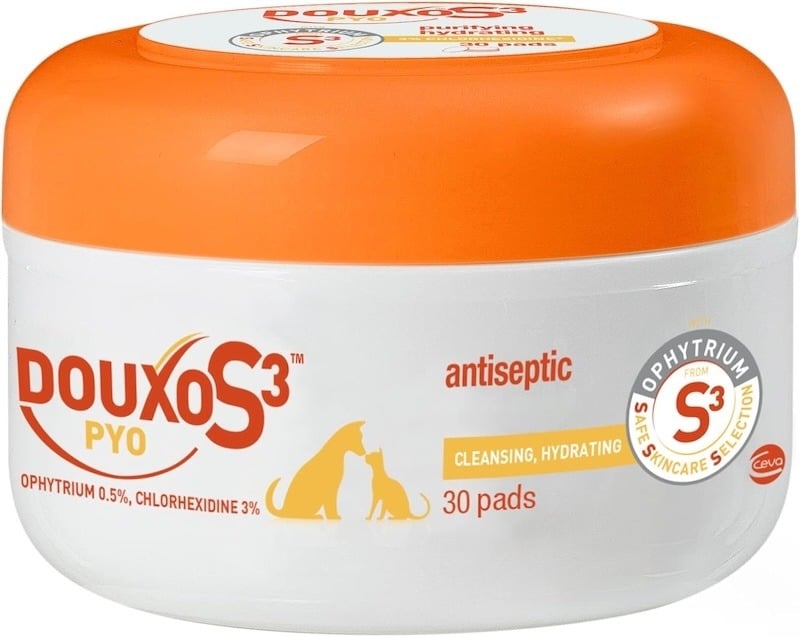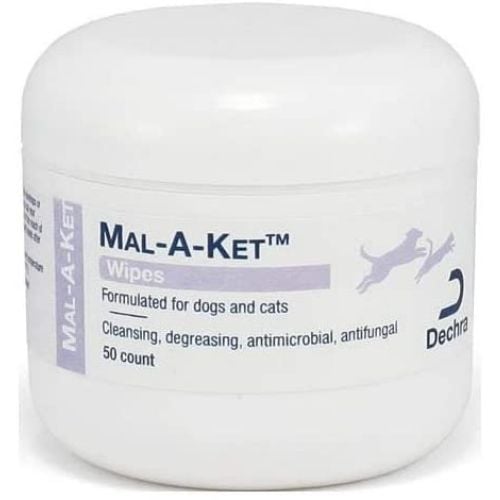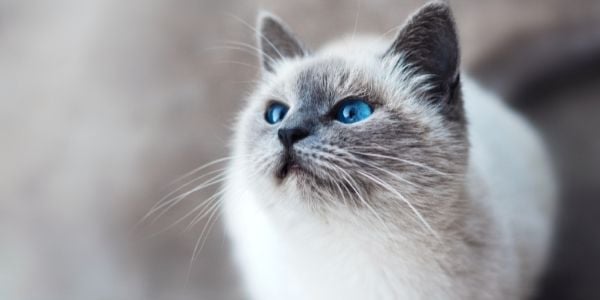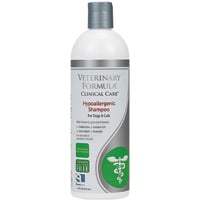
It doesn’t matter if you are two-legged or four, having acne is no fun!
Whether it is a single pimple or several, no one wants them around and that includes your cat.
While people can get acne everywhere, cats tend to get acne on their cute little chins.
What Is 'Chin Acne'?
This disease is called cat acne or, more formally, follicular keratinization. The medical name just tells us that our cat’s hair follicles are blocked by an excessive production of keratin. Keratin is a protein found in the outer layer of skin.
When the keratin is "trapped" in the hair follicle it creates an appearance of a dirty chin on your cat. But it actually is blackheads (also called open comedones) or whiteheads (also known as closed comedones).
Bacteria can invade the comedones and result in pustules (aka pimples). When cases become severe, your cat’s chin may lose hair, become red, and even bleed.
The hair follicles become more inflamed (folliculitis) and large sores that resemble boils can form (this is referred to as furunculosis – one of my favorite words!). Once furunculosis occurs, the area can be painful.
What Causes Chin Acne?
As with people, there is more than one potential cause. The disease is poorly understood but the following lists some possible contributing factors. We'll go over the most common causes in more detail below.
- Food or environmental allergies
- Reactions to plastic or metal food and water bowls
- Ringworm infection
- Infection with Demodex mites, a common type of skin parasite
- Viral infections, such as feline herpesvirus or calicivirus
- Hormonal imbalances such as with pregnancy, lactation, steroid exposure, or hyperthyroidism
- Stress
- Overactive sebaceous glands (oil glands in the skin)
- Immune-mediated diseases, such as pemphigus foliaceus
- Poor grooming habits due to age or illness
Questions? If you'd like to speak with a veterinarian about your cat's acne, Click here
Plastic and Metal Cat Bowls
Plastic and metal reactions in cats are pretty uncommon, so if your cat doesn’t have acne, they can keep using the bowls you already have! However, if they do have acne, making a change would be a good idea.
Cats can become irritated by plastic and stainless steel food and water bowls. This irritation can be due to a contact allergy to the metal and plastic itself, but it can also be caused by bacteria hiding in the small scratches that develop in these materials.
Check out some of our cat bowl recommendations.
Allergies
Another prime culprit in the development of chin acne is allergies. Allergies in pets generally are more evident in skin as compared to people who normally get signs of sneezing, runny nose, and watery eyes.
If your cat suffers from food or environmental allergies, they may have chin acne but you may also notice red or crusted areas on their lips, bald patches and excessive licking or chewing, increased scratching, small pimples on their backs, and ear infections. Some cats also develop asthma just like people can.
Infectious Causes of Feline Acne
When cats have acne because of an infection, they almost always have other signs to look for as well.
Cats can develop acne when they have a ringworm infection, which is a type of contagious fungus, but that’s usually not their only symptom. Usually, they will have patches of hair loss and crusting on many parts of their bodies.
Cats with acne could also have a demodex mite infestation. Some Demodex mites in cats are contagious between cats, but others are not. Most cats with Demodex infestations are very itchy and also have other areas of blackheads, crusting, and hair loss on their faces and bodies.
Cats can be infected with herpesvirus and calicivirus, but don’t worry – they can’t give these infections to you! These types of infections can spread between cats, but they won’t affect people.
Cats with infections like this will usually look like they have a cold — runny nose, runny eyes, sneezing. They can also develop acne on their chins, along with blackheads and irritation on their muzzles and around their eyes.
How Is Chin Acne Diagnosed?
If you notice that your cat’s chin is not its cute fuzzy self but instead you see blackheads and sores, a visit to your veterinarian may be necessary. It is important that your veterinarian diagnose the potential cause of the acne as well as rule out any other issues such as mites, fleas, allergies, and/or bacterial/fungal skin infections.
Following a complete physical examination, your veterinarian may need to perform tests such as:
- skin scrapes or hair plucks — taking samples of hair and scraping the surface of the skin to look under the microscope for mites
- skin or ear cytologies — taking swab samples to look at under the microscope for bacteria or fungus
- cultures — samples of hair or crusts are collected and submitted to a lab to look for ringworm
- additionally, other tests might be needed:
- complete blood counts, chemistries, thyroid panels, a diet trial, and allergy testing may be recommended
- in some cases, if your veterinarian doesn’t feel that ‘chin acne’ has its normal appearance, they may want to biopsy the tissue by taking a small piece of skin to have its structure and cells analyzed under a microscope
How to Treat Feline Chin Acne?
Once it has been confirmed that your cat has ‘chin acne,’ it is time for treatment.
A big part of treatment is identifying and resolving the underlying cause, but your veterinarian will often want to help heal the acne itself.
If your veterinarian has prescribed medications and made recommendations on treatment to care for the area, it is important to follow their directions carefully. Your veterinarian may prescribe or recommend:
- Cleansing the area with special cleaning pads
- Antibiotics
- Medicated shampoo
- Antimicrobial gel, cream, or ointment
- Severe cases may require steroids
- Cold laser therapy, which helps reduce inflammation
Questions? If you'd like to speak with a veterinarian about your cat's acne, Click here
Cleaning Your Cat's Face
Apply a warm compress to the site — dampen a facecloth with warm water and place it on your cat's chin for a few minutes. This is most helpful with mild acne and may reduce swelling. Make sure you use a clean facecloth every time to reduce the risk of infection!
Talk to your veterinarian about pet-safe acne pads or cleaners to gently clean your cat’s chin. Often, the products they recommend will contain chlorhexidine as the active ingredient.
Warning: Avoid products containing Salicylic Acid – which is in most of the over-the-counter human acne pads — as salicylic acid can be toxic to cats and their chin is an area they often lick.
Here are a few cleaning pads I recommend. They're great to have on hand for minor abrasions, cleaning ear canal openings, between digits on the paws, and other skin folds.


Keep your cat’s chin clean and dry, taking care to wipe their chin following their meals or after drinking if they’re particularly messy eaters or drinkers.
Preventing Chin Acne in Cats
Choice of Cat Bowls and their Care
- Switch from plastic feeding and drinking bowls to ones made of ceramic. The plastic bowls have a higher likelihood of irritating your cat’s skin and/or harboring bacteria when they get scratched up and damaged during normal everyday use and cleaning.
Stainless steel bowls are less breakable than ceramic or glass and they usually don’t cause irritation, so if your cat doesn’t have acne breakouts, stainless steel bowls are also fine to use! - Wash your cat’s feeding and water bowls daily, even the stainless, ceramic, and glass ones.
Help Keep Your Cat's Allergies Under Control
- If your cat has known seasonal pollen allergies, keep them indoors with the windows closed, during that time of year
- Use air purifiers and HEPA filters for your air conditioning to remove pollens and other allergens from the air in your home
- Sweep, vacuum, and dust regularly (ideally daily) to cut down allergens. Cats hang out closer to the floor and furniture, and they breathe very deeply, so inhaling allergens such as dust mites (those buggers are everywhere all the time) and pollen that settles on the floors, creates more chances of reactions when not removed daily.
- Wash cat bedding regularly in hypoallergenic laundry detergent and cover with dust mite covers
- Cool mist humidifiers help in dry climates
- If your cat has food allergies, be strict with what they eat and follow the advice of your veterinarian with regard to feeding recommendations
Other Helpful Prevention Tips
Having your cat regularly groomed helps in the prevention of chin acne as well as other potential skin issues. If bathing at home, use a hypoallergenic, unscented shampoo.
Skin support supplements such as pre-and probiotics and fish oil, like this one from Nordic Naturals, specifically formulated for cats and small dog breeds.
Take measures to control stress with calming products, such as VetriScience Composure Treats or Feliway pheromone wall diffuser or spray, for use on bedding.
 In ancient times, cats were worshipped as gods and they have never forgotten this. They want to always look their best, and chin acne prevents this. So help them maintain good hygiene and monitor their skin routinely to help prevent and treat their acne.
In ancient times, cats were worshipped as gods and they have never forgotten this. They want to always look their best, and chin acne prevents this. So help them maintain good hygiene and monitor their skin routinely to help prevent and treat their acne.





